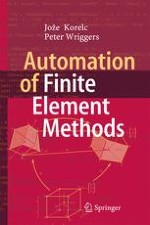2016 | OriginalPaper | Buchkapitel
7. Structural Elements
verfasst von : Jože Korelc, Peter Wriggers
Erschienen in: Automation of Finite Element Methods
Aktivieren Sie unsere intelligente Suche, um passende Fachinhalte oder Patente zu finden.
Wählen Sie Textabschnitte aus um mit Künstlicher Intelligenz passenden Patente zu finden. powered by
Markieren Sie Textabschnitte, um KI-gestützt weitere passende Inhalte zu finden. powered by
